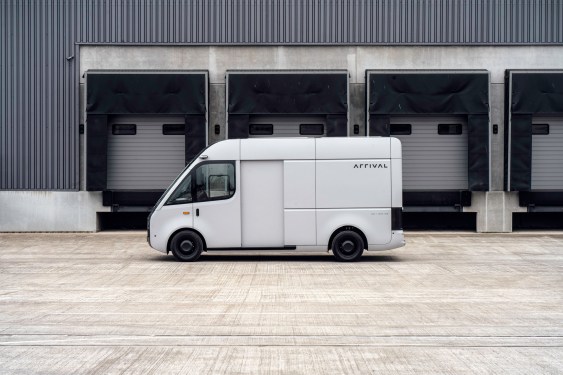Arrival: The Struggles of a Transportation Company in the Electric Age
Introduction
In the ever-evolving landscape of transportation technology, few companies have faced as much adversity as Arrival. Thisotech startup, which once seemed poised for greatness, has now entered a period of significant financial and operational challenges. As the company continues to navigate its way through restructuring efforts and pivoting its business model, it remains a prime example of both resilience and the dangers of rapid technological change.
The Arrival Phenomenon
The name Arrival is synonymous with innovation in the transportation sector. Founded in 2017 by ex-DeepMind researchers, the company rapidly gained traction for its groundbreaking autonomous vehicle technology. Its self-driving cars, capable of navigating complex urban environments without human intervention, captured the attention of tech enthusiasts and potential investors alike.
However, as interest in Arrival grew, so did its costs. The development of its autonomous driving software was accompanied by escalating expenses for hardware, including expensive sensors and cameras. These costs quickly became a significant burden on the company’s finances, forcing it to pivot its strategy multiple times over the years.
First Pivoting: A Shift to EVs
In 2019, Arrival announced its first major pivot away from autonomous vehicles toward fully electric transportation solutions. The reasoning behind this shift was clear: while autonomous cars represented a long-term vision, the immediate financial realities of the EV market were more pressing. By focusing on electric vehicles (EVs), Arrival aimed to capitalize on the growing demand for clean energy and reduce its reliance on high-cost hardware.
This pivot came with mixed results. The switch to EV production required significant investment in new manufacturing facilities and battery technology. Despite initial successes, the company struggled to scale its operations efficiently. High electricity costs, coupled with the need for advanced lithium-ion batteries, became a major financial hurdle.
Second Pivoting: A Focus on Transportation as a Service
Recognizing that its attempts to directly compete with traditional automakers were not yielding results, Arrival made another significant pivot in 2021. The company opted to focus on providing mobility as a service rather than trying to produce vehicles itself. This meant partnering with existing EV manufacturers and suppliers to offer a subscription-based service for electric vehicle ownership.
This model allowed Arrival to avoid the high upfront costs of producing EVs while still offering its proprietary autonomous driving technology. However, the success of this approach was highly dependent on the partnerships it formed and the ability to secure enough subscribers to make the model viable.
The Continuing Struggle: High Costs and Reliance on Unproven Transactions
Despite these pivots, Arrival continues to grapple with high operational costs. The development of its autonomous driving technology has been one of its most significant expenses, with ongoing research and testing requiring substantial funding. Additionally, the company has invested heavily in building manufacturing capabilities for EVs, a process that remains incomplete.
Another major financial challenge has been its reliance on unproven business strategies to generate revenue. Arrival’s current operations depend largely on partnerships and government grants, which are not guaranteed sources of income. This dependency has left the company vulnerable to changes in market conditions or shifts in government policies.
The Road Ahead: Restoring Sustainability
For Arrival to turn things around, it will need to address several critical issues. First and foremost, the company must find ways to reduce its operational costs without sacrificing innovation. This could involve exploring alternative funding models or seeking partnerships that offer more stable revenue streams.
Secondly, Arrival needs to focus on developing products that are not only safe but also commercially viable. The current emphasis on autonomous driving technology may have been a mistake if it comes at the expense of creating vehicles that consumers can actually afford and use.
Finally, the company must navigate the complexities of its restructuring efforts with caution. Job cuts, changes in leadership, and pivots to new business models all carry risks, including damage to the company’s reputation and potential loss of key assets.
Conclusion: A Cautionary Tale
The story of Arrival is a stark reminder of the challenges faced by tech startups in the transportation sector. While innovation can lead to groundbreaking ideas, it must be balanced with careful financial planning and strategic decision-making. For Arrival to succeed, it will need to not only address its current challenges but also identify new opportunities that align with its core mission of advancing autonomous and electric transportation.
As the company continues to evolve, one thing is clear: Arrival will remain a critical player in the ever-shifting landscape of transportation technology for years to come. Whether it ultimately succeeds or not, its story serves as a powerful reminder of what lies ahead for the industry—and for any company willing to embrace change.
Topics
- Arrival
- Electric Vehicles (EV)
- Transportation
- SPAC
- Autonomous Vehicles
About the Author
Kirsten Korosec is a reporter and editor who has covered the transportation tech space for several years. Her work focuses on the intersection of innovation, sustainability, and business strategy in the automotive industry.
Additional Information
For more detailed information about Arrival’s current operations or future plans, you can contact Kirsten directly at [email protected].




